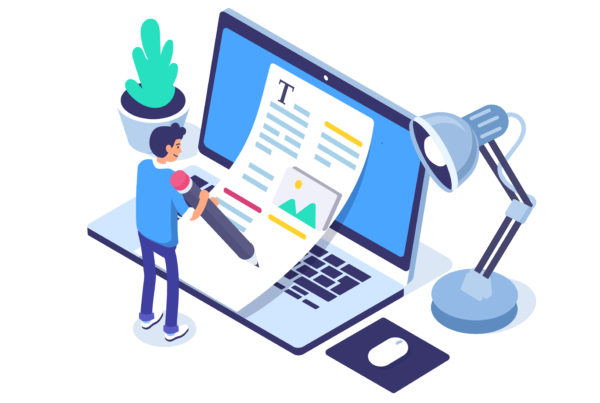Introduction
In today’s competitive digital landscape, effective lead generation is crucial for driving successful marketing campaigns. Generating high-quality leads allows businesses to connect with potential customers, nurture relationships, and ultimately drive conversions. In this comprehensive guide, we will delve into the intricacies of lead generation, exploring key strategies, best practices, and valuable insights shared by industry experts.
Understanding the Basics of Lead Generation
Lead generation is the process of attracting and capturing the interest of potential customers, known as leads, who have shown a specific intent or need related to a product or service. It involves utilizing various marketing channels, such as social media, search engines, email marketing, and more, to engage and capture leads’ attention. The ultimate goal is to guide these leads through the sales funnel and convert them into loyal customers.
Key Components of a Successful Lead Generation Campaign
1. Targeted Audience: Identifying your target audience is the foundation of any lead generation campaign. Understanding their needs, preferences, and pain points enables you to tailor your marketing messages and offers accordingly.
2. Compelling Offer: Creating a compelling offer is essential to capture the attention of potential leads. Whether it’s a discount, free trial, exclusive content, or a valuable resource, the offer should provide clear value and incentivize prospects to take action.
3. Engaging Ad Copy: Crafting engaging ad copy is crucial to entice your target audience. Clearly communicate the unique value proposition and benefits of your product or service, addressing the pain points of your audience and highlighting how your offering can solve their problems.
4. Eye-Catching Visuals: Incorporating visually appealing elements, such as high-quality images or videos, can significantly enhance the effectiveness of your lead generation ads. Visuals should be attention-grabbing and relevant to your target audience’s interests.
5. Landing Page Optimization: Creating a well-designed and optimized landing page is critical for converting ad clicks into leads. The landing page should have a clear call-to-action (CTA), a concise and persuasive copy, and a user-friendly form to capture lead information.
6. Lead Gen Form Optimization: Streamlining the lead generation form is essential to maximize conversions. Minimize the number of form fields to reduce friction, ask for essential information only, and consider using a progress bar to indicate the completion status and motivate users to finish the form.
Tailoring Lead Generation for Different Industries
Lead generation strategies may vary depending on the industry and target audience. Let’s explore some industry-specific considerations:
1. Real Estate: Real estate agents can leverage lead generation by showcasing attractive property listings, offering free consultations, or providing valuable guides and resources on the home-buying or selling process.
2. E-commerce: E-commerce businesses can entice leads by offering discounts, free shipping, or limited-time promotions. Implementing exit-intent pop-ups, abandoned cart recovery emails, and personalized product recommendations can also boost conversions.
3. Service-based Businesses: Service providers, such as lawyers, consultants, or photographers, can focus on showcasing their expertise and credibility. Offering free consultations, e-books, or case studies relevant to their target audience’s pain points can attract qualified leads.
4. Webinars and Events: Webinars and events provide excellent opportunities for lead generation. Promote the valuable insights, knowledge, or solutions attendees will gain, and consider offering exclusive deals or bonuses for live attendees to encourage participation.
Lead Generation Best Practices and Expert Insights
To ensure the success of your lead generation campaigns, it’s crucial to follow best practices and learn from industry experts. Here are some key insights shared by experts:
1. Targeted Audience Selection: Identify your ideal customer profile and focus your efforts on targeting that specific audience to improve the relevance and quality of your leads.
2. Congruency and Frictionless Experience: Maintain a consistent message across your ad, landing page, and lead generation form to avoid confusion. Make the user experience seamless by minimizing friction and optimizing load times.
3. Webinar and Live Event Strategies: Hosting webinars and live events can foster community building and increase engagement. Encourage live participation by offering exclusive benefits or limited-time deals to live attendees.
4. Utilizing Social Proof: Incorporate testimonials, case studies, or reviews to showcase social proof and build trust with potential leads. Highlight success stories and demonstrate how your product or service has positively impacted previous customers.
5. Follow-Up and Nurturing: Implement a robust follow-up system to nurture leads and guide them through the sales funnel. Use email marketing automation, personalized messages, and valuable content to stay top-of-mind and build strong relationships.
Conclusion
Mastering lead generation is a pivotal aspect of a successful marketing campaign. By understanding the fundamental principles, tailoring strategies to specific industries, and implementing expert insights, businesses can generate high-quality leads and drive growth. Remember, effective lead generation requires continuous optimization, testing, and adaptation to meet the ever-evolving needs of your target audience. With dedication, creativity, and strategic planning, you can achieve remarkable results and propel your business to new heights in the digital landscape.





